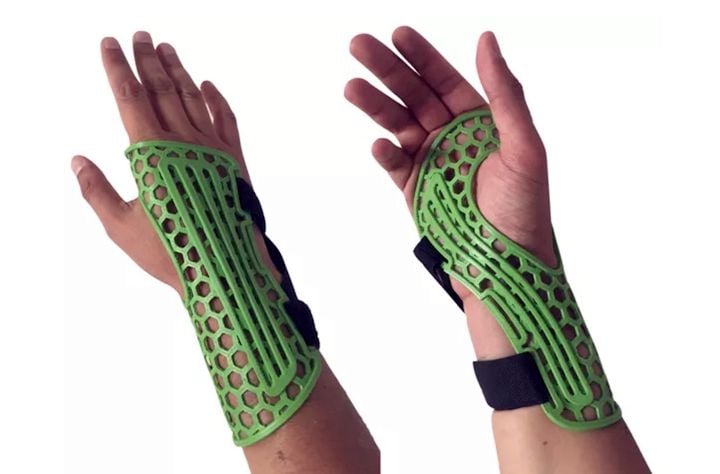![A 3D printed wrist brace made from antibacterial materials [Source: Copper3D]](https://fabbaloo.com/wp-content/uploads/2020/05/image-asset_img_5eb0a7921c037.jpg)
It appears that NASA is testing some antibacterial 3D printing materials for potential space use.
According to the list of projects being undertaken by the NASA Nebraska Space Grant Consortium, one of them involves 3D printing objects and testing their antibacterial properties. They explain:
“NASA uses a variety of methods to control and reduce microbial contamination for planetary protection. Future long duration missions to Mars will bring new challenges to the health and well-being of astronauts (i.e., orthopedic needs, skin disorders, and emergency wound closure). The use of antibacterial 3D printed filament has promising potential applications for the development of medical devices associated to bacterial development, such as postoperative prostheses, wound dressing, and surgical equipment.”
This could be of critical importance on long duration space voyages, where crew are held in close contact with each other and their equipment for long periods, an environment that could encourage infectious outbreaks.
The research work involves producing several test articles using PLACTIVE 1% Antibacterial Nanoparticles composite from Copper3D, a manufacturer of antibacterial 3D printer filaments.
I think this is a very interesting idea and it may very well work, in spite of my ongoing concerns about safe use of 3D printed objects.
The problem in producing food-safe objects is that even if the material being 3D printed is actually food-safe, the 3D printer it flows through must ALSO be designed food-safe. Currently almost all 3D printers are NOT food-safe, even if the filament is so.
And even then the objects are not truly food-safe. Anyone who has 3D printed an object using an FFF process, which extrudes material layer by layer, knows that the surface quality is quite rough and there are frequently gaps in the layers, allowing air access to the interior of the object.
![3D printed objects are almost always not waterproof [Source: Fabbaloo]](https://fabbaloo.com/wp-content/uploads/2020/05/image-asset_img_5eb0a79299a1d.jpg)
Last year we performed a simple experiment by 3D printing a vase and filling it with water. As you can see in this image, it was not by any description waterproof. Most FFF 3D prints are like this.
Now imagine if you were to put food into this container, assuming it were made from food-safe material on a food-safe 3D printer. Would the food be safe to eat/drink? Probably.
But what about the SECOND time you want to use the container? There will no doubt have been many incursions of food material through the pores and cracks in the layers to infest the interior of the object with yummy bacteria foodstuff. You would absolutely not wish to drink from that container a second time.
But, you say, it could be sterilized! That’s very possible. However, to do so requires raising the temperature to over 100C to eliminate the breeding bacteria – and that is well over the limit for PLA-based materials. Deformation would occur.
Thus I am skeptical of using 3D prints for any food-safe application.
So how does NASA fare here?
They seem to have very carefully chosen their application to NOT include food or other bulky quantities of organic material. The article chosen is finger prostheses, an application that does not involve food, but only light surface contact.
It’s still entirely possible that the interior structure of the prostheses could be polluted, but we will see how their experiment proceeds.
![One of Copper3D's antibacterial 3D printing filaments [Source: Copper3D]](https://fabbaloo.com/wp-content/uploads/2020/05/image-asset_img_5eb0a792e4bd0.jpg)
But how can this particular filament from Copper3D be antibacterial? It seems that they mix in an amount of ”copper nanoparticles and other enhancing elements” to attack organic material coming in contact. After 24 hours of contact with the material, more than 99.99% of bacteria are eliminated.
Copper3D suggests their material is appropriate for such applications due to its unusual characteristics:
- Fully antibacterial
- Non-toxic
- Odorless
When this material is combined with 3D printing, it’s possible to make custom-fitted objects of various kinds on demand in a rapid manner.
Should the NASA study prove successful, Copper3D may be getting a lot more business for their patented approach.











We were able to view video footage of the 3D printing hair-caught incident from last week and have determined exactly how it occurred, and how to prevent it from happening again.